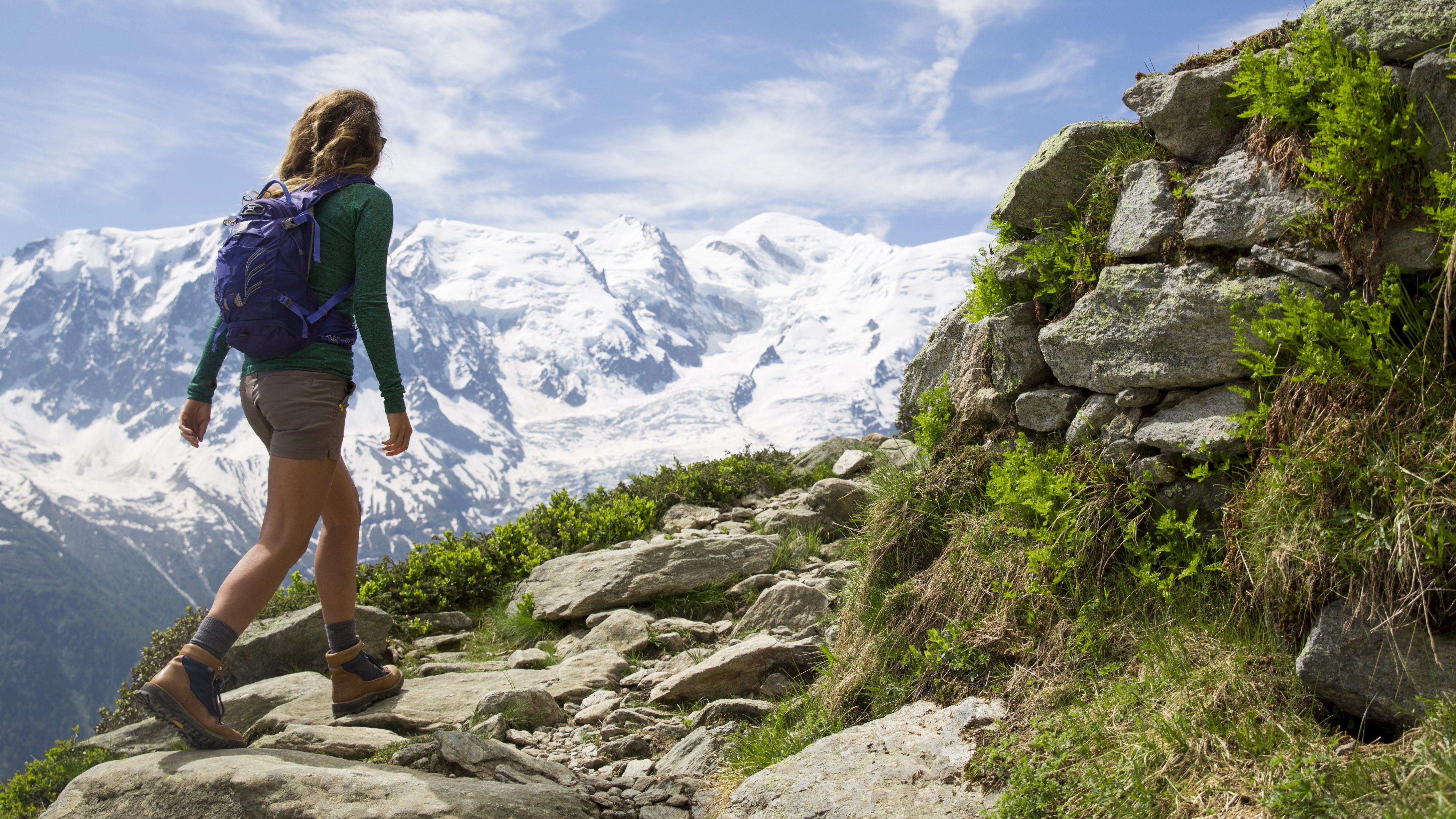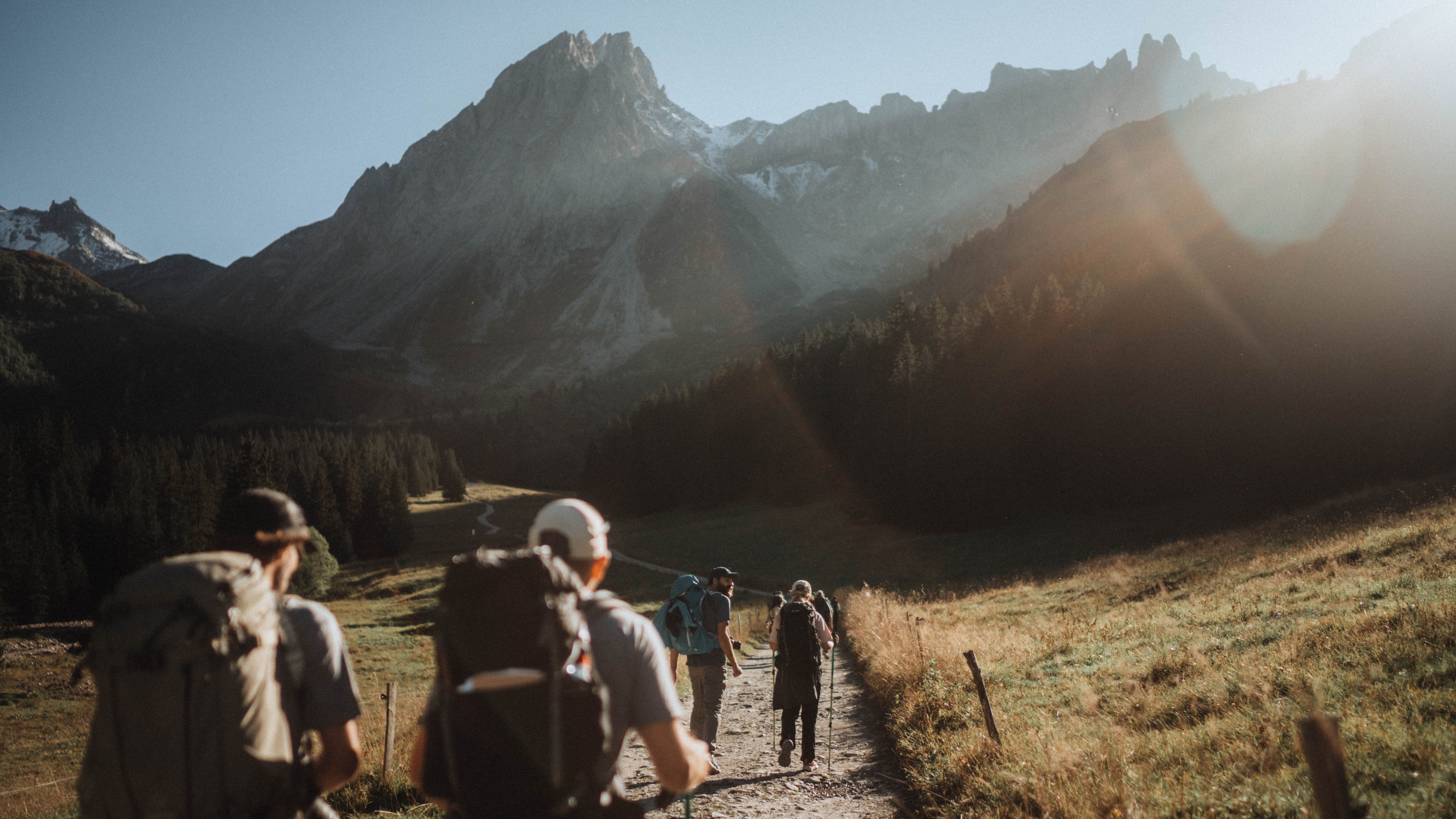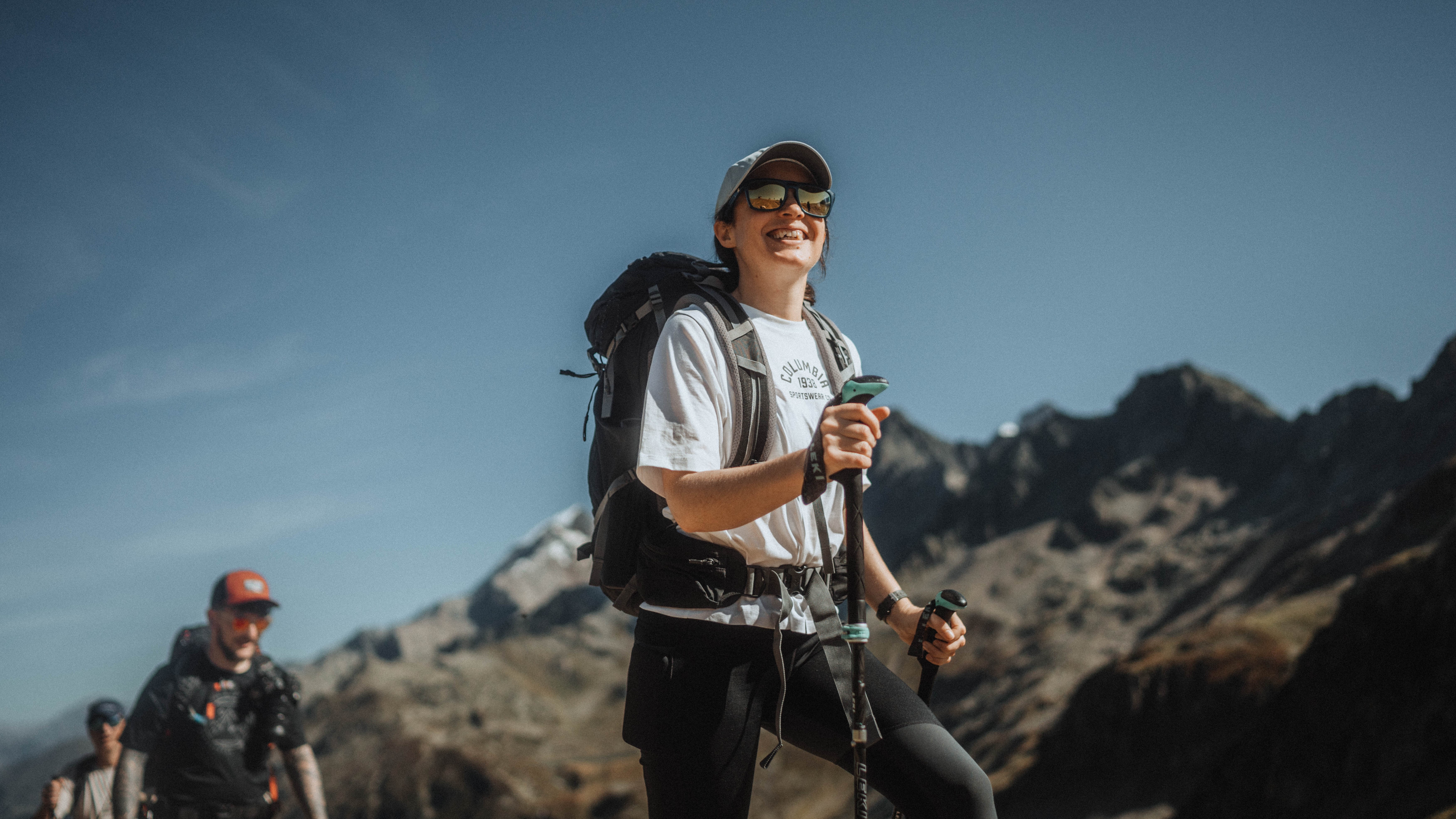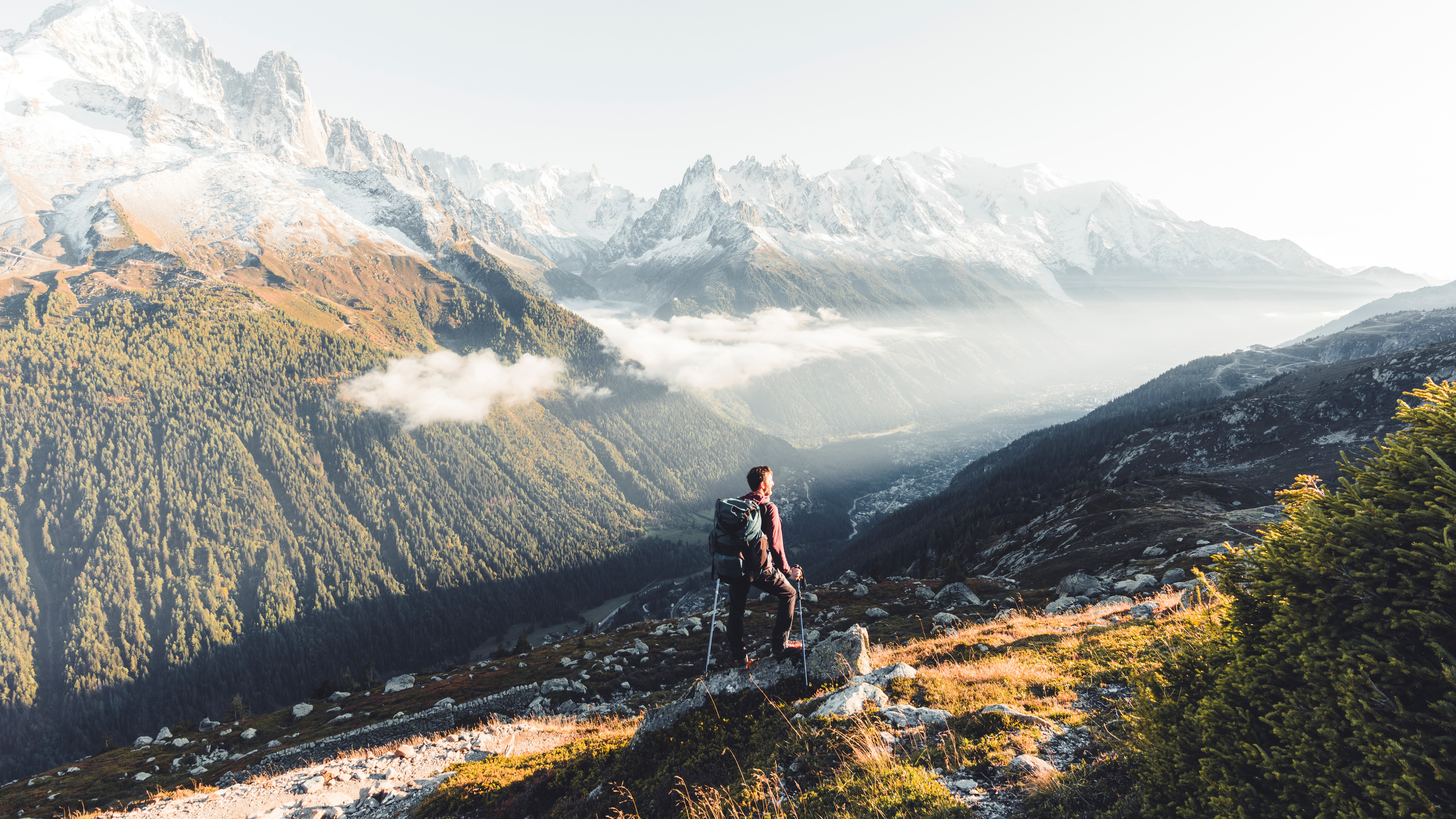What is the Haute Route? All your hiking questions answered
The Haute Route might not be the most famous long-distance trail in the Alps or even the longest, but it’s worth looking into if you love hiking

Do you have a pair of hiking boots that you’re itching to get out in the Alps? If so, you might be considering a long-distance trail like the Haute Route. While pretty much any town in the Alps makes a great base for day hikes, spending several days or even weeks trekking across some of the most dazzling mountain scenery in the world makes for a memorable adventure indeed. The Haute Route might not be the most famous long-distance trail in the Alps (that’s the Tour du Mont Blanc), or even the longest (that goes to the 5,000 km Via Alpina), but it’s worth looking into if you want to get some quality time in with your trekking poles this year.
What is the Haute Route?
Simply put, the Haute Route is one of the world’s great long-distance hiking paths. Its name means “the high route” which is what it was branded when it was first chartered as a summer mountaineering route by members of the Alpine Club in the mid-19th century. It was given its French translation in 1911 when it was first explored as a ski touring route, and today this is its common name.
Linking the great mountains of Mont Blanc and the Matterhorn, hikers enjoy quintessential alpine scenery on this trail, which connects the ski resort towns of Chamonix in France and Zermatt in Switzerland.
These days, in addition to the original route, there is a lower elevation “walkers route” which remains below 9,800 feet (3,000 meters) while the ski touring route is higher, involving some glacier hiking and requiring gear like crampons and ice axes. There are various offshoots along the way and depending on the route you take, the trail varies in length but if you stick to the walker’s route the entire way, you’ll cover a whopping 132 miles (212 km).

Is The Haute Route hard?
What makes a hiking trail hard always depends on the hiker in question, but certainly for a lot of us, the sheer mileage of this route alone would be enough for us to classify it as challenging, even if just tackled in hiking boots in the middle of summer.
Distance aside, however, it’s the elevation gain of this route that stands out as presenting real difficulty. If you take the classic walker’s route, your total elevation gain is around 49,800 feet, which is almost as much as climbing Everest twice. Though you won’t reach such high elevations as the world’s tallest peak, you’ll still reach areas that are considered high altitude, so altitude sickness could be a concern.
The path itself is reasonably clear and free of mud, but there are sections of loose rock and singletrack that pose their own challenges. In general, hiking in the Alps is hard work and needless to say, you’ll want to get in shape to tackle this hike, and not the other way around.
Advnture Newsletter
All the latest inspiration, tips and guides to help you plan your next Advnture!

What is the difference between the Tour du Mont Blanc and the Haute Route?
Whereas the Haute Route takes hikers and skiers from one mountain (and country) to another, the Tour du Mont Blanc is a trail that circles Mont Blanc, the highest peak in the Alps, passing through four countries along the way. The TMB is shorter than the Haute Route at 106 miles and requires only 32,940 feet of elevation gain in that time, and is most famous for being the trail followed by runners in the UTMB, the world’s most famous ultra trail race.
However, those differences in distance and elevation gain aside, the two trails have plenty in common when it comes to terrain and scenery, and walkers on either route can expect spectacular alpine scenery and welcoming huts where you can spend the night and enjoy some delicious fondue.

How long does it take to do the Haute Route?
How much time you need to book off work to do the Haute Route of course depends on which route you’re taking, whether you’re hiking, running or skiing, and what pace you move at. However, most guiding companies lead treks that last between 10 and 14 days, with shorter options that don’t take in the entire route available. Hiking for 14 days might sound like a long time, but that breaks down to an average of about nine miles per day, which is quite manageable for a lot of keen walkers. Also, you can hike the Haute Route self-guided and pick your own pace.
When should I walk the Haute Route?
Because of its higher elevation, summer is undeniably the best time to approach the Haute Route if you want to do so without needing crampons, and even then, you may encounter snow. July is probably the ideal month if you want to see wildflowers and to be able to walk in hiking shorts and a T-shirt, but always pack a fleece or down jacket, a waterproof jacket, hiking pants, hat and gloves for those chilly overnights. In general, the Haute Route is not as busy as the ever-popular TMB, though there are sections where it intersects with that trail and other trails where it may be busy.

Can you wild camp on the Haute Route?
Because the trail is so long, passing through two countries and many municipalities, it’s not easy to give a blanket statement about what is allowed and forbidden. In general though, wild camping (dispersed camping in the US) is prohibited on private land in France and discouraged in Switzerland except above treeline, and there are definitely areas where you could be in a nature preserve or National Park and wild camping isn’t allowed.
There may be some quieter areas at high elevation where you can pitch a backpacking tent or bivy for the night without getting in trouble, but technically you could be breaking the law and be subject to a fine if you get caught. It all depends on where you are.
That said, hut hiking is truly one of the best and most special aspects of hiking in the Alps, and while it certainly makes for a more expensive approach, you won’t regret the decision when you walk into a beautiful hut after a long day on your feet and have a warm shower, a hearty meal, some great wine and get to sleep in a real bed (just bring your sleeping bag liner).
To help keep costs down, there are also official campgrounds so you can create an itinerary that involves some huts, some nights in tents and perhaps the occasional night of wild camping. Whatever you decide, make sure you do your research ahead of time and book your accommodation, as lodging can fill up leaving few other options.
Julia Clarke is a staff writer for Advnture.com and the author of the book Restorative Yoga for Beginners. She loves to explore mountains on foot, bike, skis and belay and then recover on the the yoga mat. Julia graduated with a degree in journalism in 2004 and spent eight years working as a radio presenter in Kansas City, Vermont, Boston and New York City before discovering the joys of the Rocky Mountains. She then detoured west to Colorado and enjoyed 11 years teaching yoga in Vail before returning to her hometown of Glasgow, Scotland in 2020 to focus on family and writing.

